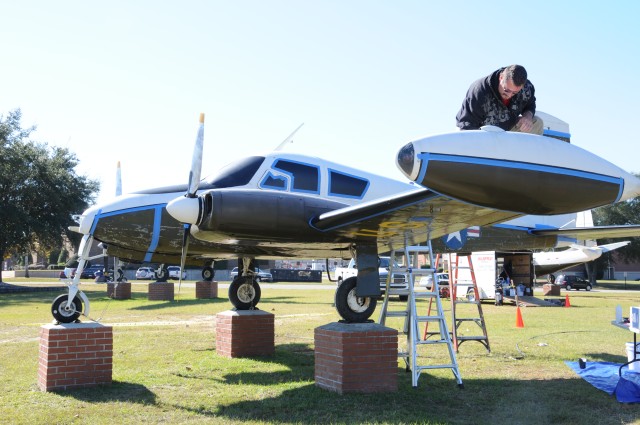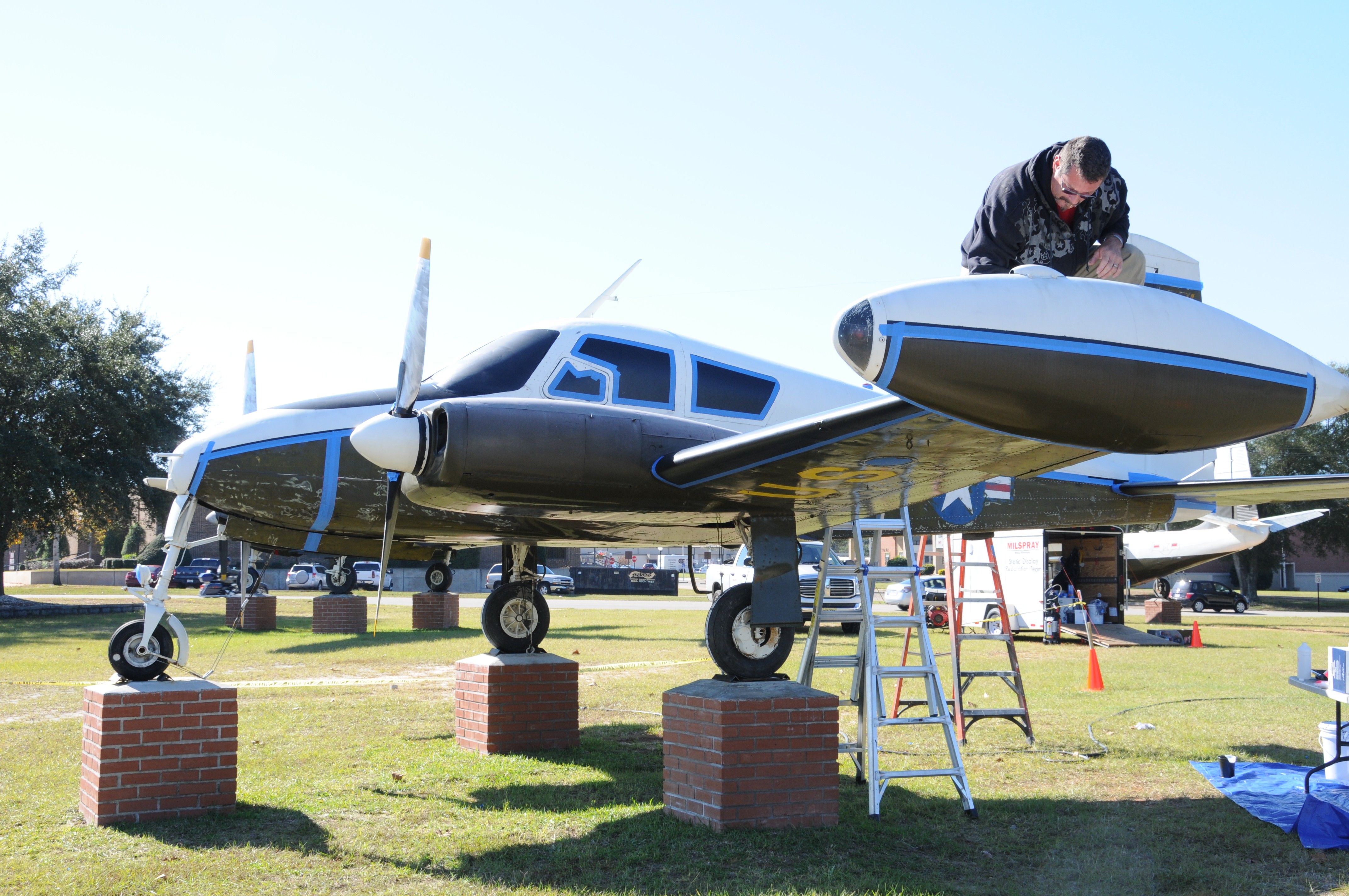
While the helicopters flying overhead usually command the most attention from the post community, numerous static displays across the installation are reminders of their use in Aviation history.
Steve Maxham, U.S. Army Aviation Museum director, is tasked with the upkeep of more than a dozen fixed- and rotary-wing aircraft placed around post. Several helicopters are also displayed at Cairns Army Airfield and Lowe and Shell Army heliports.
The most recent projects, conducted late last year, involved repainting three airplanes at the corner of Fifth Avenue and Red Cloud Road and repairing portions of the CH-47 Chinook helicopter and fixed-wing Caribou, both stationed outside the museum.
Maxham said a cyclical process, availability of funds and necessity dictates what aircraft are given facelifts and when. The U.S. Army Center of Military History provides money for these projects, he noted.
The time and cost spent on each aircraft varies by the amount of work done, materials used and the birds' original conditions, Maxham added.
MILSPRAY employees traveled from their headquarters in Lakewood, N.J., to complete these projects. Teams of two rotated from October to December to perform restoration services, said marketing manager Kathleen Ferry.
The refurbishing process began with corrosion removal and any necessary repairs, Ferry said. Employees then used a one-coat paint containing ultraviolet- and corrosion-inhibiting properties to protect the aircraft. Once paint dried, they applied any required decals and designs.
When conducting restorations, Maxham said he and the teams try to remain as true as possible to the original colors, details and designs. He does so by following military manuals from aircrafts' corresponding time periods.
Maintaining aircraft here is more than just about keeping Fort Rucker beautiful, Maxham said.
"It's both a moral and a cultural imperative," he said. "Society can't exist without some aspect of preservation of history. The military is a society of its own. No one understands our culture as well as we do."
Maxham feels a close connection to the military community he helps preserve. He is a self-admitted Army brat and has worked in the service's museums since graduating from college. While in school, he studied the military "sub-culture," including its traditions, language and clothing. This is what he attempts to salvage through his work around post and at the museum.
"I keep the faith of the past," Maxham said.
Ferry said her employees' work helps to meet this purpose.
"If you don't take care of the assets, they are not going to last in the elements," she said. "A lot of those aircraft are hard to come by. For (museums) to get a historical piece is a big deal, and you need to preserve it. There's nothing else to replace it with because it's authentic. It preserves Aviation history and military culture."
Looking back at history is another reason Maxham said preservation is critical. Researching milestones and continually making improvements helps the military progress.
He said he hopes to bridge the gap between the past and the future, continue military traditions and build a stronger Aviation Branch by keeping static aircraft around post in tip-top shape.

Social Sharing